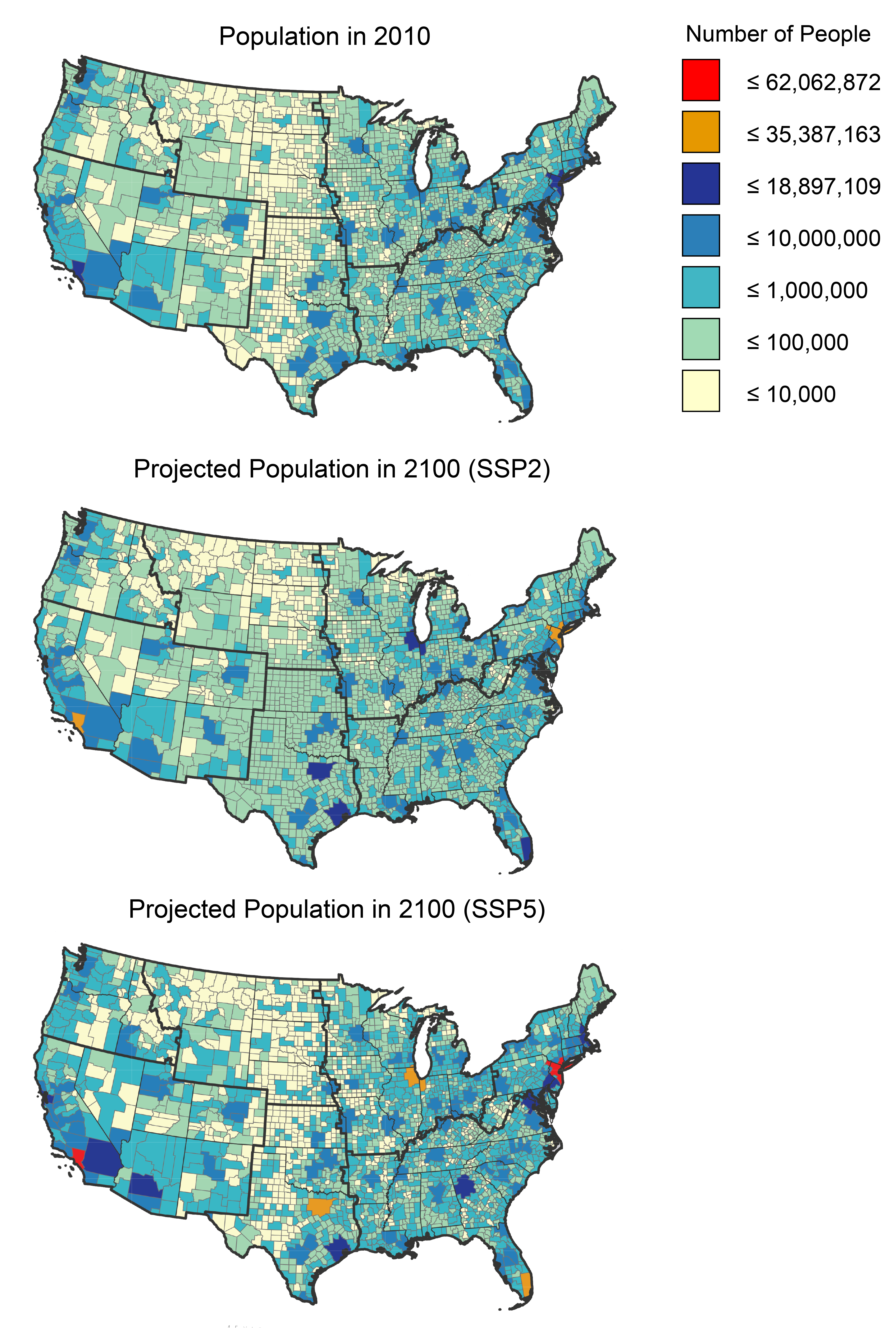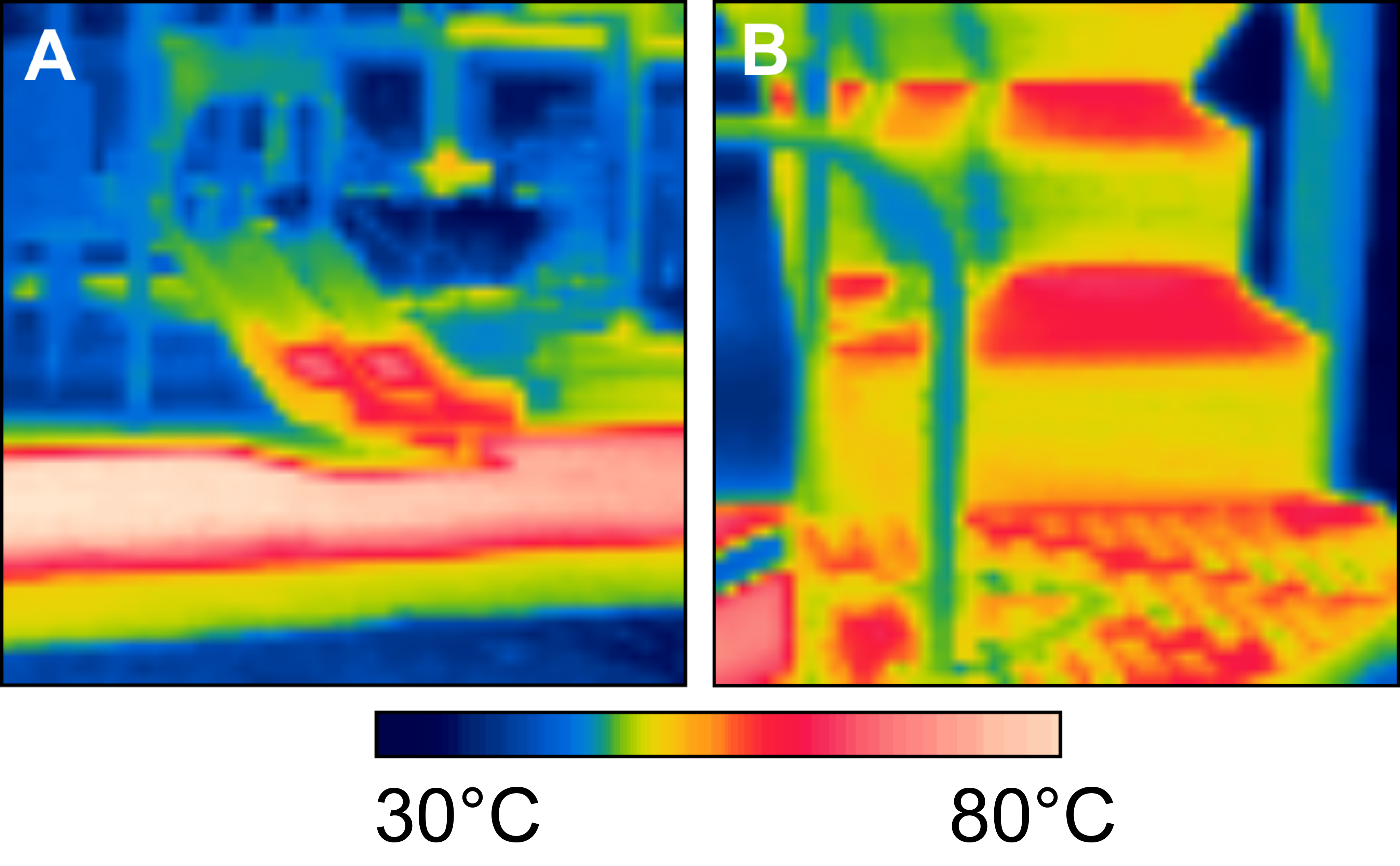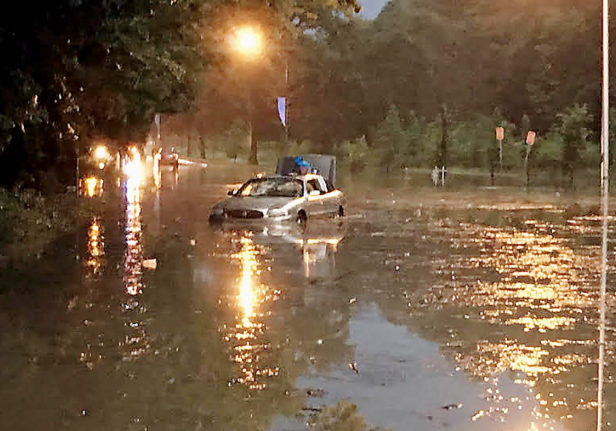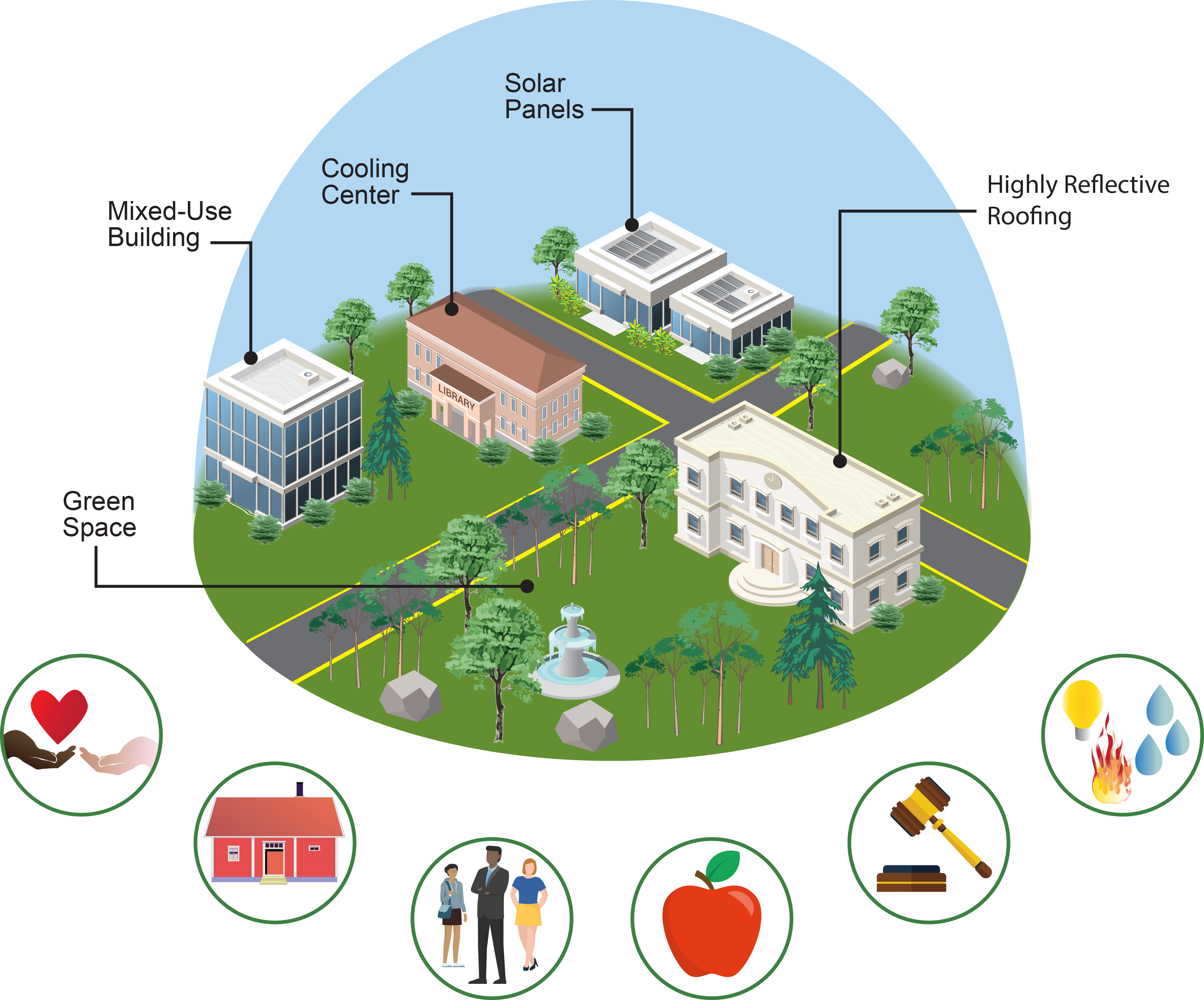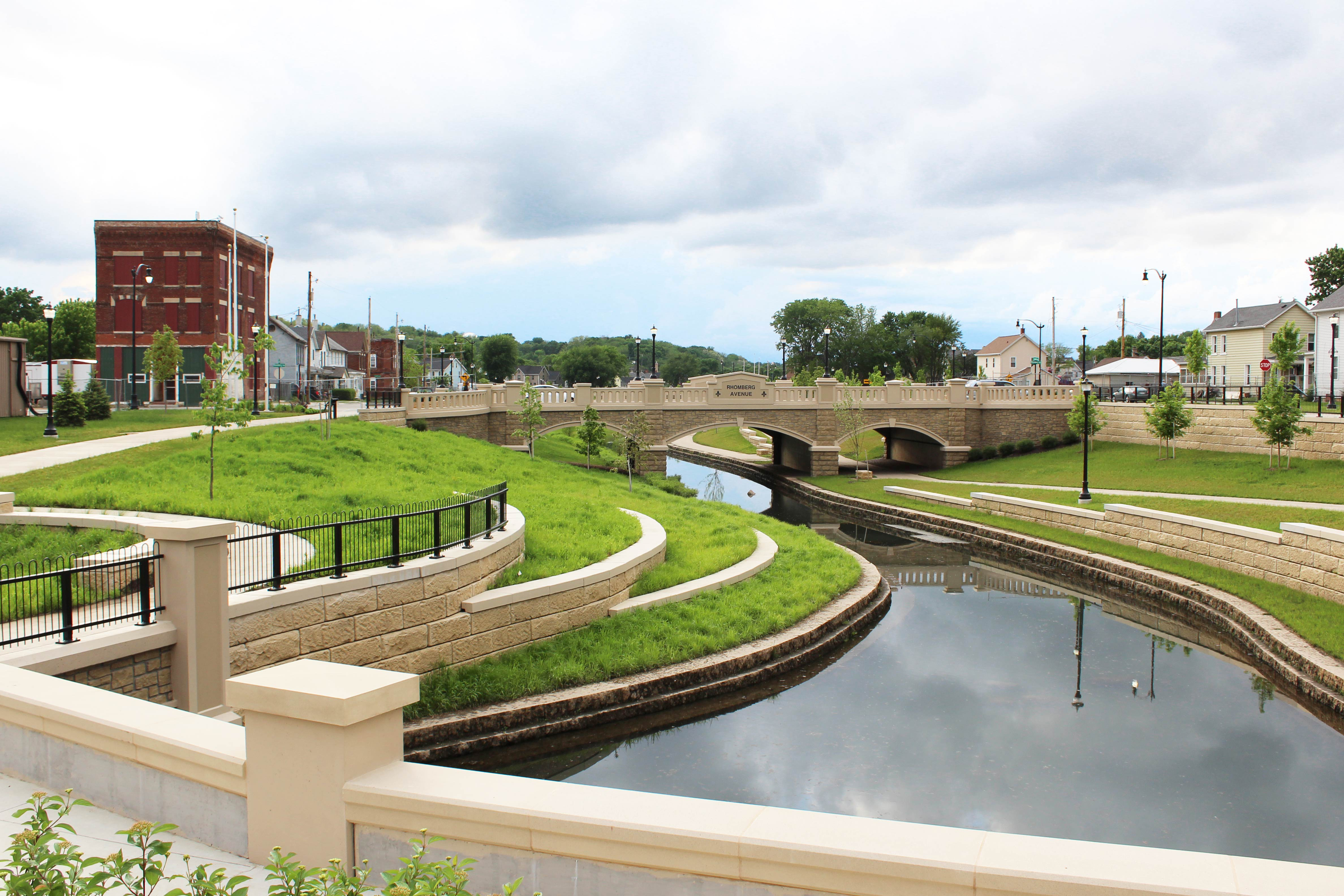Report authors developed this chapter through technical discussions of relevant evidence and expert deliberation and through regular teleconferences, meetings, and email exchanges. For additional information on the overall report process, see App. 1: Process. The author team evaluated scientific evidence from peer-reviewed literature, technical reports, and consultations with professional experts and the public via webinar and teleconferences. The scope of this chapter is urban climate change impacts, vulnerability, and response. It covers the built environment and infrastructure systems in the socioeconomic context of urban areas. This chapter updates findings from the Third National Climate Assessment and advances the understanding of previously identified urban impacts by including emerging literature on urban adaptation and emphasizing how urban social and ecological systems are related to the built environment and infrastructure. The five case-study cities were selected because they represent a geographic diversity of urban impacts from wildfire, sea level rise, heat, and inland flooding. The author team was selected based on their experiences and expertise in the urban sector. They bring a diversity of disciplinary perspectives and have a strong knowledge base for analyzing the complex ways that climate change affects the built environment, infrastructure, and urban systems.
Key Message 1: Impacts on Urban Quality of Life
The opportunities and resources in urban areas are critically important to the health and well-being of people who work, live, and visit there (very high confidence). Climate change can exacerbate existing challenges to urban quality of life, including social inequality, aging and deteriorating infrastructure, and stressed ecosystems (high confidence). Many cities are engaging in creative problem solving to improve quality of life while simultaneously addressing climate change impacts (medium confidence).
Description of evidence base
Urban areas provide resources and opportunities for residents’ quality of life.145,146 However, many cities face challenges to prosperity, including aging and deteriorating infrastructure,13 social inequalities,9,46 and lack of economic growth.147,148 These challenges play out differently depending on a city’s geographic location, economic history, urban development pattern, and governance. Studies link urban development with lower air,15 water,16 and soil17 quality; altered microclimates (for example, urban heat islands);149,150 increased risk of certain vector-borne diseases;151 and adverse effects on biodiversity and ecosystem functioning.152,153,154 Exposure to temperature extremes,155 allergens,156 and toxic substances157 and limited access to healthy food10,158,159 and green space11,160,161 create environmental and social vulnerabilities for urban populations. Vulnerabilities are distributed unevenly within cities and reflect social inequalities related to differences in race, class, ethnicity, gender, health, and disability.1 These populations of concern are at a greater risk of exposure to climate change and its impacts.3,46,123
Climate change combines with other trends to increase stress on the health and well-being of urban residents.10,46,155,158 Research demonstrates that climate change can exacerbate many of the vulnerabilities described above. It raises temperatures, alters weather patterns, and increases the frequency and severity of extreme weather events, creating risks to urban ecosystems (such as urban tree cover),162,163,164 infrastructure both above and below grade,165,166,167 historic and cultural sites,51,52,164,168,169,170 and residents’ physical and mental health.171,172,173,174 Coupled with climate change, urban expansion increases the risk of infectious disease175,176 and air quality problems from wildfires.55,177
Metropolitan areas often have more resources than rural ones, as reflected in income per capita, employment rates, and workforce education.178,179 Innovative urban problem solving that builds on these resources can take the form of policies and institutional collaborations,58,180 technologies,145,181 eco- and nature-based solutions,182,183 public–private partnerships,59 social network and climate justice initiatives,60,184 “smart” cities,106,145,181 or a combination of approaches. However, cities vary greatly in their capacity to innovate for reasons related to size, staffing, and existing resources.
Major uncertainties
It is difficult to predict future urban trends with certainty. Many factors influence the size and composition of urban populations, development patterns, social networks, cultural resources, and economic growth.180 The degree to which climate change will exacerbate existing urban vulnerabilities depends in part on the frequency and intensity of extreme weather events,145 which are projected with far less certainty than incremental changes in average conditions.81 Moreover, projections are not often made at the city scale.185 Climate change may accelerate urban tree growth, but overall effects on growing conditions depend on a variety of factors.186 These uncertainties make it difficult to predict how climate change and other factors will intersect to affect urban quality of life. Furthermore, quality of life is difficult to measure, although some metrics are available.187
Urban climate vulnerability depends on local social, political, demographic, environmental, and economic characteristics.59,110,145 Urban exposure to climate change depends on geographic factors (such as latitude, elevation, hydrology, distance from the coast).145 Some places may be able to protect quality of life from minor climate stresses but not from extreme, though rare, events.145 The speed and pace of innovative problem solving is difficult to predict, as is its effect on quality of life..59
Description of confidence and likelihood
There is very high confidence that the opportunities and resources available in a particular urban area influence the health and well-being of its residents. There is high confidence that climate change exacerbates challenges to aging and deteriorating infrastructure, degrading urban ecosystems, and urban residents’ health and well-being. There is medium confidence that many cities are engaging in creative problem solving to address the challenges to quality of life posed by climate change. The effectiveness of this response depends on many factors (for example, intensity of extreme weather events, stakeholder collaboration, and internal and external resources available).
Key Message 2: Forward-Looking Design for Urban Infrastructure
Damages from extreme weather events demonstrate current urban infrastructure vulnerabilities (very high confidence). With its long service life, urban infrastructure must be able to endure a future climate that is different from the past (very high confidence). Forward-looking design informs investment in reliable infrastructure that can withstand ongoing and future climate risks (high confidence).
Description of evidence base
There is wide agreement that architects, engineers, and city planners need to consider a range of future climate conditions in urban infrastructure design to guarantee that assets perform for the duration of their expected service lives.14,62,80,81,188,189,190,191,192 Many researchers and professionals from various industries—engineering,80,81,193,194 water resources,195,196 architecture, construction and building science,62,190,197,198,199,200,201,202 transportation,203,204,205 energy,206 and insurance207,208—are actively developing or have proposed strategies to integrate climate change science and infrastructure design. The Government Accountability Office, the State of California, and a variety of professional organizations have recognized the importance of incorporating forward-looking climate information (planning for or anticipating possible future events and conditions) in design standards, building codes, zoning requirements, and professional education and training programs to protect and adapt built systems and structures. This includes the need to develop and adopt design methodologies using risk management principles for uncertainty (see Ch. 28: Adaptation, KM 3 for more discussion)90 and the integration of climate projections, nonstationarity, and extreme value analysis to inform designs that can adapt to a range of future conditions.8,14,80,81,90,188,190,209,210,211,212,213,214,215 Similarly, there is support for incorporating climate change risk considerations into the preparation of financial disclosures.44,96,191,216,217 Reports from multiple sectors highlight the need for licensed design professionals, property industry professionals, and decision-makers to be aware of emerging legal liabilities linked to climate change risks.80,95,208,218,219,220
Numerous studies document substantial economic damages in urban areas following extreme weather events and predict an increase in damages through time as these events occur with greater frequency and intensity.14,165,166,167,205,221 Due to underinvestment in urban infrastructure13,222 and well-documented urban vulnerabilities to the effects of climate change and extreme weather,80,81,223 forward-looking design strategies are critical to the future reliability of urban infrastructure.14,80
Major uncertainties
There are gaps in our understanding of the performance capacity of existing structures exposed to climate change stressors and of the available resources and commitment (at the state, local, tribe, and federal level) to implement forward-looking designs in investments.192,224 The scale and speed with which climate security design principles will be integrated into infrastructure design, investments, and funding sources are difficult to predict, as are the implications for municipal bonds, solvency, and investment transparency.77,83,96,97,98,192 There is also uncertainty regarding how the U.S. legal system will determine the limits of professional liability for climate-related risks for licensed design professionals, attorneys, and investors.95,218,219,220,225
The extent to which key climate stressors will change over the design life of urban systems and structures is uncertain. It depends on the rate of global climate change as well as regional and local factors.150,185,192 Engineering and architectural design is largely concerned with weather extremes,80,81,190,226 which are generally projected with far less certainty than changes in average conditions.81 Action depends on how individual decision-makers weigh the costs and benefits of implementing designs that attempt to account for future climate change. The extent to which the U.S. market is able to innovate to provide these services to the global market is unknown.
Description of confidence and likelihood
There is very high confidence that the integrity of urban infrastructure is and will continue to be threatened by exposure to climate change stressors (for example, more frequent and extreme precipitation events, sea level rise, and heat) and that damages from weather events demonstrate infrastructure vulnerability. Many urban areas have endured high costs from such events, and many of those costs can be attributed to infrastructure failures or damages. There is very high confidence that urban infrastructure will need to endure a future climate that is different from the past in order to fulfill its long service life. There is high confidence that investment in forward-looking design provides a foundation for reliable infrastructure that can withstand ongoing and future climate risks. How much implementing forward-looking design will reduce risks is less clear, since much depends on other factors such as changes in urban population, social inequalities, the broader economy, and rates of climate change.
Key Message 3: Impacts on Urban Goods and Services
Interdependent networks of infrastructure, ecosystems, and social systems provide essential urban goods and services (very high confidence). Damage to such networks from current weather extremes and future climate will adversely affect urban life (medium confidence). Coordinated local, state, and federal efforts can address these interconnected vulnerabilities (medium confidence).
Description of evidence base
Research focusing on urban areas shows that climate change has or is anticipated to have a net negative effect on transportation,43,205,223,227 food,44,107,108 housing,228 the economy,44,228,229,230,231 ecology,3,152 public health,2,3,12,44,231,232 energy,43,44,233,234 water,43,122,228,235 and sports and recreation.2,235,236
Researchers have modeled and documented how negative effects on one system that provides urban goods and services cascade into others that rely on it.3,43,44,109,122,229,231,233,234 Several draw on the example of Superstorm Sandy. These effects scale up to the national economy and across to other sectors, creating longer-term hazards and vulnerabilities.44,99,109,227 The energy–water nexus, defined as the reliance of energy and water systems on each other for functionality, is a good example of documented system interdependency.43,234 Research indicates that direct or high-level climate impacts on a variety of urban sectors (such as transportation, energy, drinking water, storm water) have cascading economic, socioeconomic, and public health consequences.3,12,44,229,231
The literature shows that coordinated resilience planning across sectors and jurisdictions to address interdependencies involves using models and plans,3,43,108,111,227,237,238 finding effective intervention points,109 creating system redundancy,43,237 and motivating behavioral change. Recent reports discuss how interdependencies among energy, water, transportation, and communications services inform adaptation strategies that span sectors.43,227
Major uncertainties
Interconnections among urban systems have been studied less extensively than climate change effects on individual urban sectors, and there are still gaps to be filled.239,240,241 The complexity of urban systems leads to uncertainty and modeling challenges. System models need to account for interconnections, feedback loops, and cascading effects from rural areas, among urban sectors, and within a sector. Creating a comprehensive framework to understand these connections is difficult.239,242 There is a lack of forward-looking models of how projected climate changes will impact interdependent urban systems. Cities do not usually have the range of data needed to fully analyze system connections.102,111 Mixed methods analysis, where professional experience and qualitative data supplement available datasets, may partially compensate for this problem.241 Despite information gaps, urban stakeholders are beginning to address system interconnections in adaptation efforts.59
While it has been demonstrated that climate change affects urban systems, the extent to which climate change will affect a given urban system is difficult to predict. It depends on the unique strengths and vulnerabilities of that system as well as the regional and local climate conditions to which the system is exposed.110,223,243 Modifying factors include spatial layout, age of infrastructure, available resources, and ongoing resilience efforts.43,244 Similarly, critical points of intervention are unique to each urban area. Local-scale analysis of vulnerability and resilience has not been done for most U.S. cities.102,241
The severity of future climate impacts and cascading consequences for urban networks depends on the magnitude of global climate change.223 Urban systems may be able to tolerate some levels of stress with only minor disruptions. Stresses of greater frequency, longer duration, or greater intensity may compromise a system’s ability to function.36,43,109,122,227 Models can reveal changes in the likelihood or frequency of occurrence for a particular type of extreme event (such as a 100-year flood), but they cannot predict when these events will occur or whether they will hit a particular city or town.245
Description of confidence and likelihood
There is very high confidence that urban areas rely on essential goods and services that are vulnerable to climate change because they are part of interdependent networks of infrastructure, ecosystems, and social systems. There is high confidence that extreme weather events have resulted in adverse cascading effects across urban sectors and systems, as there is documentation of a significant number of case studies of urban areas demonstrating these effects. It is projected with medium confidence that network damages from future climate change will disrupt many aspects of urban life, given that the complexity of urban life and the many factors affecting urban resilience to climate change make future disruptions difficult to predict. Similarly, there is medium confidence that addressing interconnected vulnerabilities via coordinated efforts can build urban resilience to climate change.
Key Message 4: Urban Response to Climate Change
Cities across the United States are leading efforts to respond to climate change (high confidence). Urban adaptation and mitigation actions can affect current and projected impacts of climate change and provide near-term benefits (medium confidence). Challenges to implementing these plans remain. Cities can build on local knowledge and risk management approaches, integrate social equity concerns, and join multicity networks to begin to address these challenges (high confidence).
Description of evidence base
Multiple review studies have documented that cities in all parts of the United States are undertaking adaptation and mitigation actions.45,115,246 Municipal departments, including public works, water systems, and transportation, along with public, private, and civic actors, work to assess vulnerability and reduce risk. Actions include land-use planning, protecting critical infrastructure and ecosystems, installing green infrastructure, and improving emergency preparedness and response.45,114,115,117,247 Many cities are part of multicity networks (for example, the Great Lakes Climate Adaptation Network, ICLEI, and C40 Cities Climate Leadership Group) that provide opportunities for peer-to-peer learning, sharing best practices, and technical assistance.59,114,117,120 Researchers have recognized the benefits of shared motivation and resource pooling across cities59 and of incorporating local knowledge, priorities, and values into adaptation planning.45,248 The private sector, utilities, nongovernmental organizations, libraries, museums, and civic organizations are involved with urban adaptation and mitigation.2,45,59,115,196,249,250 Studies are beginning to analyze the social, economic, and political factors that shape whether and how cities carry out climate change response.114,115,116,131,142
Numerous studies have examined the ways in which adaptation actions reduce the impacts of weather extremes in urban areas. Documented benefits include reductions in urban heat risk48,126,127,128,130,251 and flooding impacts.118,252,253 These actions can provide additional public health and economic benefits.59,254,255,256,257 Studies have also noted that low-regret and incremental urban adaptation are not likely to significantly reduce the impacts of projected climate change.59,131,258 In addition, several studies discuss how urban adaptation can cause adverse consequences related to existing socioeconomic and spatial inequalities and the uneven distribution of urban climate risks.60,123,124,125
Major uncertainties
While urban adaptation actions can reduce the effects of extreme weather, there is uncertainty regarding the effectiveness of these actions against future climate change.115,246 Much of this uncertainty arises from the difficulties inherent in predicting the future impacts of climate change. This uncertainty is compounded by a lack of regional and local data for many cities, by the difficulty of evaluating the effects of climate change on local extremes,150,251 and by the inability of knowing how climate changes intersect with other urban changes.67,185 Moreover, there is a lack of forward-looking models and standardized monitoring strategies to test the costs, co-benefits, and effectiveness of urban response. Adaptation actions that focus solely on physical protection of urban assets are not likely to effectively address social vulnerability.114,123 Urban adaptation effectiveness depends heavily on local characteristics. While cities do learn best practices through multicity networks, one city’s strategy may not be as applicable to other cities.
Research on drivers of and challenges to urban response is in the incipient stage, with divergent results about social and political requirements for effective response.114,116,142 Although cities are leading the way in adaptation and mitigation, many face significant barriers such as resource challenges, which will affect the rate of spread, extent, and duration of urban response.45,145 There is little research on the effectiveness of different incentives for urban response or how to best support action in low-income communities.
Description of confidence and likelihood
There is high confidence that municipal governments and other institutions in many U.S. cities are planning and implementing climate change adaptation and mitigation actions. There is high confidence that urban adaptation and mitigation can provide additional near-term benefits, although the distribution of benefits and harms within cities is uneven. There is medium confidence in the effect these actions have and will have on current and future climate change impacts. If cities take only small actions, they are unlikely to fully protect urban residents from devastating impacts, particularly given projected levels of climate change. There is high confidence that cities face challenges in responding to climate change and that when cities build on local knowledge, use risk management approaches, explicitly address social vulnerability, and participate in multicity networks, their ability to respond to climate change is improved. The degree of improvement depends on other factors that affect urban response outcomes.

